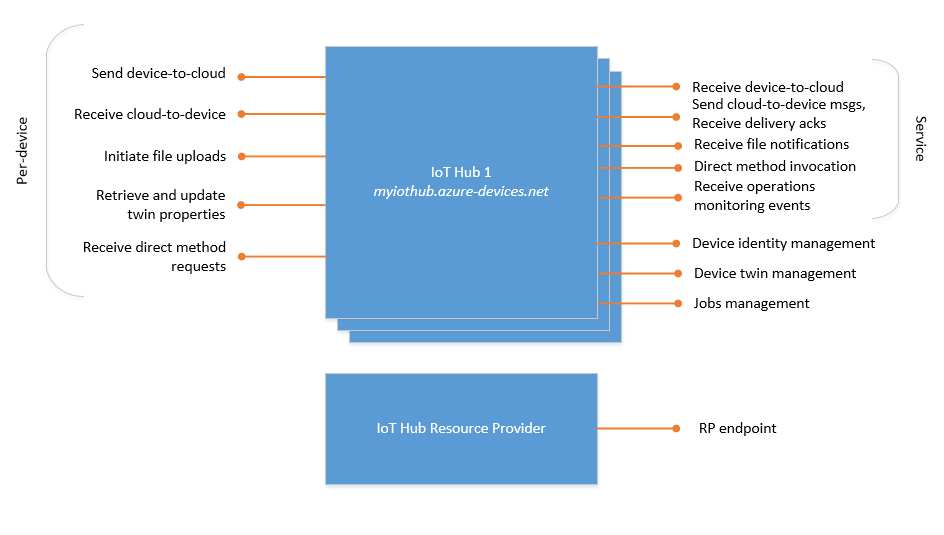Hello @Julian Werfel Thanks for the query on this forum!
Could you please add more info on your Use-Case or scenario on the need for API to send Cloud to Device messages via REST API instead of SDK? any backend application limitations in your project, to use SDK?

Send cloud-to-device messages from an IoT hub
IoT Hub provides three options for device apps to expose functionality to a back-end app:
- Direct methods for communications that require immediate confirmation of the result. Direct methods are often used for interactive control of devices such as turning on a fan.
- Twin's desired properties for long-running commands intended to put the device into a certain desired state. For example, set the telemetry send interval to 30 minutes.
- Cloud-to-device messages for one-way notifications to the device app.
Device endpoints. For each device in the identity registry, IoT Hub exposes a set of endpoints, These endpoints are used by the device to Pull the related data.
Service endpoints. Each IoT hub exposes a set of endpoints for your solution back end to communicate with your devices.
If you are trying to send a Cloud-To-Device Message using the REST API directly you can't by-design, As Azure IoThub stands like a guardian protecting large scale of devices.
I would recommend to give a try with Direct-Methods!, as i have seen many projects using Direct Methods for various purpose (You can be creative here!!) even though your scenario may be different, we certainly can help you over here...!
Anyone with service connect permissions on IoT Hub may invoke a method on a device.
Direct methods follow a request-response pattern and are meant for communications that require immediate confirmation of their result. For example, interactive control of the device, such as turning on a fan. Yes, you can also write a wrapper using Azure Functions using SDK, as per Sander's suggestion on this thread!!!
If this answers your query, do click Accept Answer and Yes for this answer as helpful. And, if you have any further query do let us know by commenting in the below section.
